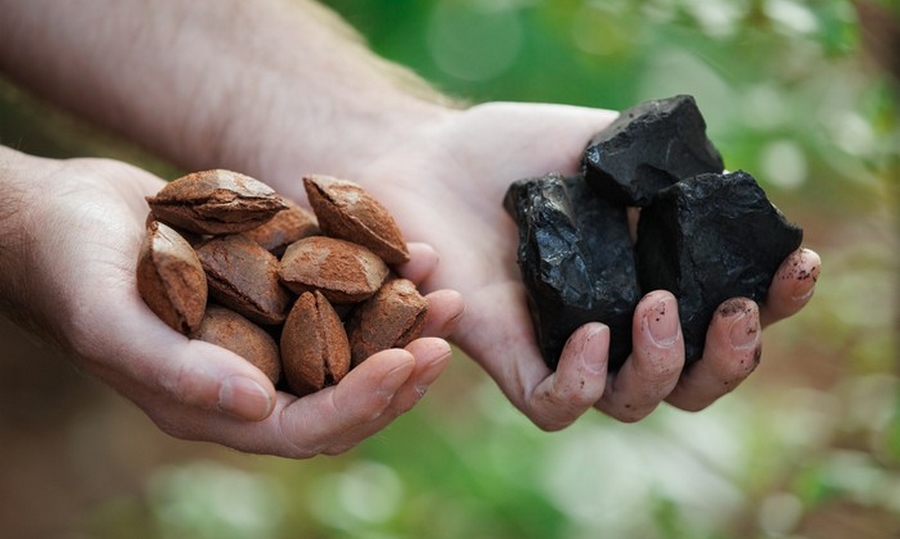Bark biorefinery
The Bark Biorefinery Project ran from 2018 to 2023 and tested the feasibility of extracting and refining high-value chemicals from pine bark (an underutilised resource). This was a pioneering initiative to create valuable and sustainable products.
To derisk this, the project was designed with modular extraction technologies that would allow, at best, the ability to extract maximum value from bark and, in the worst case, focus on a subset of extractions that could still deliver on promised outcomes. The project identified numerous applications by deconstructing the bark into its chemical constituents, providing an alternative to petroleum-based products, and fostering the nation's bioeconomy. Around 2.4 million tonnes of bark are available every year and this will increase as more logs are debarked for export.
Over the last six months of the project, it became clear that the hydrophobic materials needed to be directed to high-value, low-volume applications and that hydrophilic materials would be the primary driver for bulk use of the pine bark resource. This has involved building new relationships with different industries to deliver on supporting a physical bark biorefinery post-project.
The five-year Scion-led research programme was supported by the Ministry of Business, Innovation and Employment’s Endeavour Fund.
As part of Scion's research into guiding New Zealand towards a circular bioeconomy, it has been recognised that forestry will play a significant role. Bark biomass features as an essential co-resource, along with wood, supply the generations to come with sustainable alternatives to fossil-based materials and chemicals. Dr Elspeth MacRae (ex-Scion) explained Scion's vision in a Stuff article.
Read more:
- These boots were tanned with pine bark
- Bark biorefinery progress
- Bark: A building block for a circular bioeconomy
Contact: Stefan Hill, Portfolio Leader, Bio/Organic Chemistry or Paul Bennett, Portfolio Leader, High Value Biorefineries
Key findings
The extraction and utilisation of water-repellent extracts from pine bark will initially be targeted at high-value applications, with lesser-value uses being possible as biorefinery numbers and production scale increase. Based on techno-economics, they will initially need to be part of an integrated biorefinery rather than as standalone products due to low extraction yields.
Extraction of tannin from pine bark presents an immediate opportunity to grow to ~120M NZD/year business, with around 60M NZD in sales in the first five years.
Production of bark briquettes from residual bark from a Bark Biorefinery is possible. These bark briquettes can help with refinery energy needs and supply markets with a carbon-neutral alternative to coal.
While a tannin/briquette Bark Biorefinery is financially feasible, there is more value in a fully integrated biorefinery. That is a biorefinery making a range of sustainable products at a single site reducing overall costs. However, these first products allow for building a first-generation Bark Biorefinery based on tannin/briquettes. Then, extra extraction modules can be added later as interest in other compounds becomes economic.
We identified key regions in New Zealand that can supply the required bark volumes for Bark Biorefineries, providing regional investment and development opportunities to support new value chains. At full estimated production of tannin and briquettes across all Bark Biorefineries across New Zealand, it could provide:
- 175 direct and 434 indirect jobs.
- Global sales of over 120M NZD per annum
- During the build phases, provide 0.5B NZD investment in local economies.
- Displace >360,000 tonnes of CO2 -e from coal boilers.

Leather boots made from pine bark tanned leather
A demonstration pair of leather work boots were made in collaboration with LASRA (NZ Leather and Shoe Research Association) with leather tanned using Scion's pine bark tannin. As a proof of concept, the boots reveal the high quality of the produced leather in a finished product and will serve as a showpiece when engaging with leather producers and users (shown below). Further, they demonstrate the potential to initiate a new bioproduct value chain in New Zealand, ranging from forestry to luxury leather products.

New Zealand’s first Bark Biorefinery based on Tannin for the leather industry and Bark Briquettes for niche energy markets
Pulling together all the parties and investors required for a fully integrated Bark Biorefinery to produce all possible products is difficult. However, if the Bark Biorefinery is constructed as envisioned as a modular biorefinery, then it is possible to choose products that would attract initial investors.
This would see tannin production for the leather industry and bark briquettes for coal replacement.
Tannin for leather production
Initial work in collaboration with LASRA and Tasman Tanning used pine bark tannin to produce leather for a demonstration pair of boots (made by McKinley’s of Dunedin). This led to a connection with the world's second-largest supplier of chemicals to the leather industry, TFL (France/Germany).
Bark Briquettes as a coal replacement
An opportunity for bark briquettes is historic steam engines like those at MOTAT. This steam train is used as transport between MOTAT and the Auckland Zoo. Operators see the day when they can no longer access or use coal in these historic machines and are eager to try alternatives. Another opportunity is the Ernslaw Steamboat in Queenstown which currently runs on coal.
Scion has produced 250 kilograms of biofuel briquettes for the museum to operate and transport visitors throughout the day on the 132-year-old steam tram no. 100.
Read more:


Publications
Several research articles were published throughout the Bark Biorefinery programme and more are expected throughout 2024.
Student Research
PhD student funded by the project
Dr Navneet Brar successfully defended her PhD thesis entitled "Understanding the Effect of Ionic Liquids and Deep Eutectic Solvents on Extraction Processes" in February of 2022. This work was written up and published recently in the Journal of Wood Chemistry and Technology (2022). Dr Brar's key results were that the progressive addition of water as an antisolvent to Pinus radiata bark extracts in ionic liquids could be used to fractionate the extracts into predominantly waxy and carbohydrate components with separate aromatic fractions. The extent to which this selectivity could be obtained was highly dependent on the structure of the ionic liquid, with longer alkyl chains leading to reduced selectivity of the precipitates formed.
While Dr Brar's thesis has now been completed, the data obtained is being followed up by a BSc(Hons) student who has explored it using PCA analysis and will be conducting selected extractions further to enhance the selectivity of these ionic liquid extractions.
Mr Sahil Patel, as part of a BSc (Hons), carried out research in the area of switchable solvents for the extraction of suberin compounds from the bark of Pinus radiata. Switchable solvents have hydrophobic and hydrophilic forms, and we have discovered that the hydrophobic extractions can facilitate the selective removal of aliphatic waxes (carboxylic acids, alcohols) with a relatively low proportion of resin acids under ambient condition extraction processes. This has led Mr Patel to enrol in a PhD focused on the use of switchable solvents for the fractionation of Pinus radiata bark to avoid the need for solvent removal/distillation and facilitate the recycling of the solvent.
This is expected to be submitted mid-2024.
The project also supported Master student Maxime Nourtier working on the Impregnation of wood with pine bark waxes and Post Doctoral Researcher Artur Bento - ITQB NOVA, University of Lisbon, characterising pine bark suberins and the application in anti-microbial films.
Collaborators and funders
The Bark Biorefinery programme was funded by the Ministry of Business, Innovation and Employment (MBIE)
The project was heavily interconnected with science organizations nationally and internationally. This provided opportunities for staff exchange and leverage of knowledge and equipment.
In the project’s final year, notable collaborations with Callaghan Innovation, Universidade de Lisboa, and The University of Auckland extended the science resulting in new post-contract opportunities and further draft manuscripts for later peer-reviewed submissions.
New Zealand collaborators
- University of Auckland - Chemistry Department
- Callaghan Innovation
- Pharmalink
- LASRA NZ Leather & Shoe Research Association
European collaborators
- Fraunhofer Institute, Germany
- VTT Technical Research Centre of Finland
- ITQB/University of Lisbon/Universidad NOVA de Lisboa, Portugal
- INRAe, France
Industry Research partners
- Timberlands
- AICA
- ENZA Nutraceuticals Ltd
- Resene
- Lawter Chemicals
- H&R, Germany
- Quayside
- Patagonia
- TFL (France/Germany)
- Pharmalink
- Tasman Tanning
- Crossing
- Deady Ponies
- MOTAT
- Daltons Ltd
- Permian Energy
- Protcer & Gamble Discovery Centre P&G
- Futurity Renewables
- Woolchemy NZ Ltd
- Ligar Polymers
